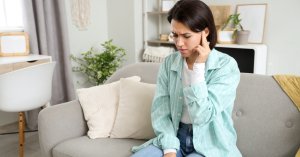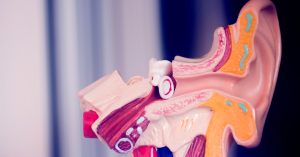If your ears feel full, tingly, sore, or strange after wearing headphones, you’re not alone. Find out what causes the discomfort—and how to prevent it.
You’ve just finished a long work session, a music marathon, or a gaming binge with your favorite headphones. But when you take them off, something feels… off. Your ears feel weird—maybe full, itchy, sore, or even like they’re ringing. Sound familiar?
This sensation is more common than you think, and while it’s often harmless, it can sometimes be a warning sign of underlying ear issues or unhealthy listening habits. The good news? Understanding the causes of headphone-related discomfort is the first step toward long-term ear comfort and hearing health.
In this article, we’ll break down the physical and auditory reasons why your ears might feel strange after headphone use, explore potential medical concerns, and share practical fixes and prevention tips—so you can keep enjoying your favorite audio without compromising your ears.
Common Sensations After Headphone Use
You pop off your headphones and suddenly notice your ears feel odd. Maybe there’s pressure, ringing, a muffled sound, or even a strange tingling. While everyone experiences it differently, these post-headphone sensations share a few common causes — and knowing how to interpret them can help you spot potential problems early.
What “Weird” Feels Like: Pressure, Fullness, or Ringing
The term “weird” is subjective, but here are some of the most frequently reported feelings after wearing headphones:
Ear fullness or pressure (like needing to pop your ears)
Tingling or itching inside the ear canal
Muffled or reduced hearing clarity
Sharp or dull pain, particularly in the outer ear (pinna)
Tinnitus — ringing, buzzing, or hissing sounds
A sensation of the ears feeling “blocked” or “clogged”
Feeling overstimulated or “buzzed” by the sound experience
While these symptoms often fade quickly, they can signal something deeper if they persist or recur.
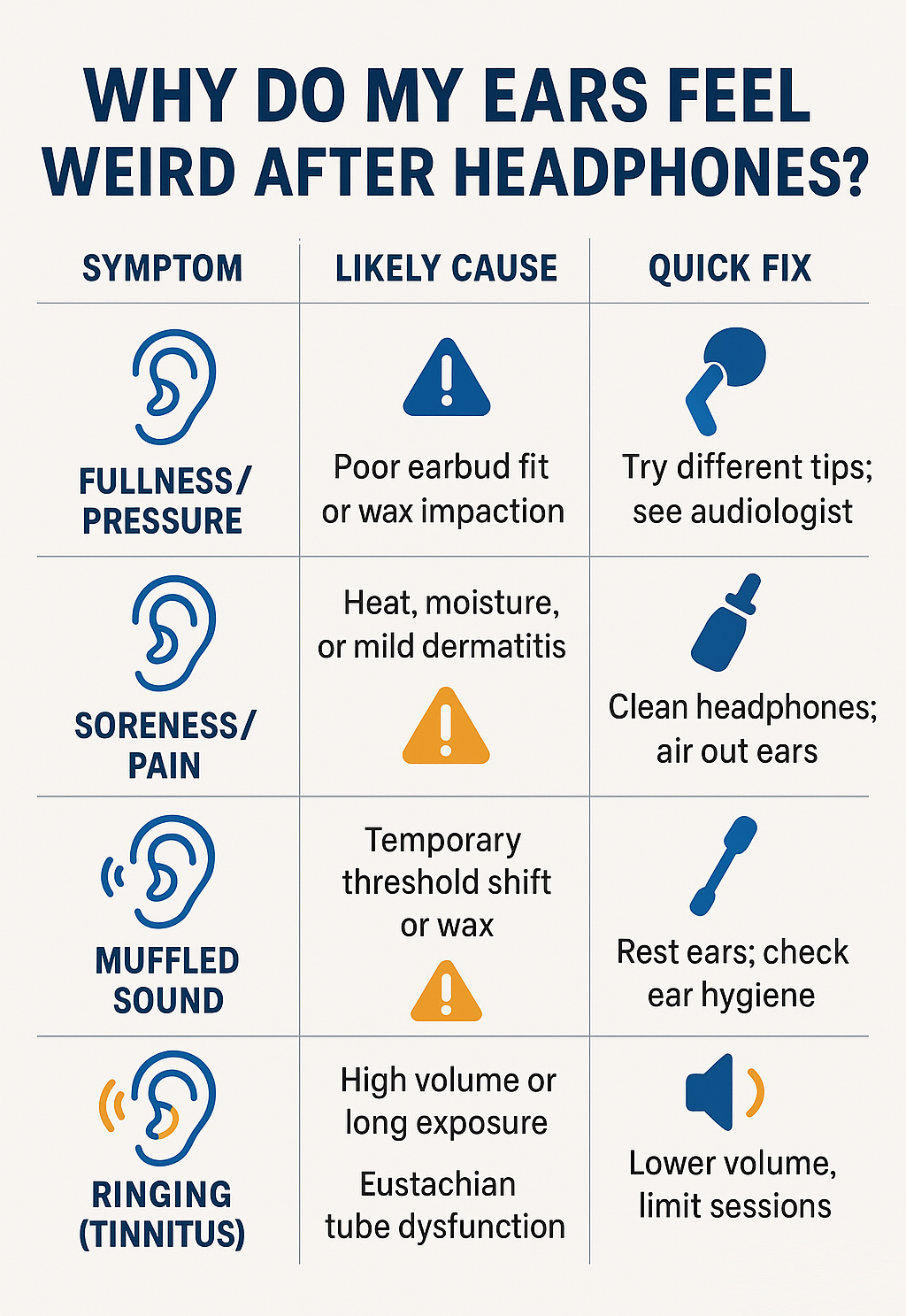
When It’s Temporary vs. a Red Flag
Not all weird sensations are cause for concern. Here’s how to tell the difference:
| Temporary & Common | Potential Red Flags |
|---|---|
| Mild pressure from a snug fit | Persistent ear pain or pressure after removing headphones |
| Minor warmth or sweat after long use | Ringing or muffled hearing that lasts more than a few hours |
| Slight hearing fatigue or disorientation | Recurring fullness, dizziness, or balance issues |
| Brief tingling or itchiness | Visible irritation, rash, or discharge from the ears |
Frequency, intensity, and duration are your biggest clues. If the sensation is minor and goes away quickly, it’s likely just a sign that your ears need a break. But if symptoms linger or get worse with repeated use, it’s time to dig deeper.
Up next, we’ll explore the physical causes behind these sensations — including fit, pressure, heat, and headphone design.
Physical Causes of Headphone Discomfort
Not all ear weirdness comes from the audio itself — sometimes the design and wear of the headphones are the culprits. Poor fit, pressure, or extended use can lead to sensations that range from mildly annoying to downright painful.
Ear Canal Pressure and Fit Issues
One of the most common causes of discomfort is the physical pressure headphones or earbuds apply to the ear canal or the outer ear.
In-Ear Headphones (Earbuds):
Insert directly into the canal, which can create a plugging sensation or even a pressure vacuum.
May not fit properly, leading to constant friction or uneven seal, which feels odd or irritating over time.
Can push earwax deeper, causing a blocked or full feeling.
Over-Ear and On-Ear Headphones:
Can compress the ear cartilage or surrounding skin, especially with tight headbands.
Prolonged wear may cause tenderness, especially near the tragus or jaw hinge.
Weight and clamping force can result in muscle tension or skin irritation.
Ill-fitting headphones not only cause discomfort but may also reduce sound quality, encouraging users to turn up the volume — which brings new risks.
Moisture, Heat, and Prolonged Use
Headphones can also trap:
Heat (from the device or your body)
Sweat (especially during workouts)
Moisture (from humidity or weather)
This creates a warm, damp environment, ideal for:
Bacterial or fungal growth
Ear canal irritation (leading to itchiness or inflammation)
Contact dermatitis (a rash from headphone materials)
Even high-end headphones can cause these issues if not cleaned regularly or worn for hours at a time without breaks.
In many cases, just adjusting your fit, hygiene routine, or headphone style can dramatically improve comfort.
Up next, we’ll explore the internal effects of sound itself — what’s happening inside your ears when volume, frequency, or duration start to take a toll.
Auditory Effects: What Happens Inside Your Ears
Even if your headphones feel fine physically, your ears might still “feel weird” because of how sound affects the delicate structures inside. Listening to music or podcasts — especially at high volumes or for long durations — can overstimulate your auditory system, leading to temporary (or in some cases, permanent) hearing issues.
Temporary Threshold Shift
This is a common but underrecognized phenomenon, especially among headphone users.
Temporary Threshold Shift (TTS) happens when:
You’re exposed to loud sounds for an extended time
Your hearing sensitivity drops temporarily
You may experience muffled sound, fullness, or a sensation of pressure
This is your body’s protective response to overstimulation — the inner ear is essentially trying to “mute” harmful input to prevent lasting damage. TTS typically resolves within a few hours, but repeated exposure can lead to permanent changes.
The Role of Sound Pressure and Volume
Headphones deliver sound directly into your ear canal — which means less ambient noise but more intensity. In small spaces, even moderate volume levels can result in:
Increased sound pressure on the eardrum and cochlea
Overstimulation of hair cells in the inner ear
Fatigue of the auditory nerve, leading to strange sensations like buzzing, numbness, or temporary imbalance
Prolonged listening at volumes above 85 dB (about 60% of max volume on most devices) increases the risk of tinnitus, sensitivity, and long-term hearing changes.
Listening fatigue is real — and weird sensations like “buzzing ears” or “sound hangover” are your auditory system’s way of asking for a break.
Up next, we’ll explore how these sensations can point to underlying conditions that might be triggered by headphone use — especially if they happen often.
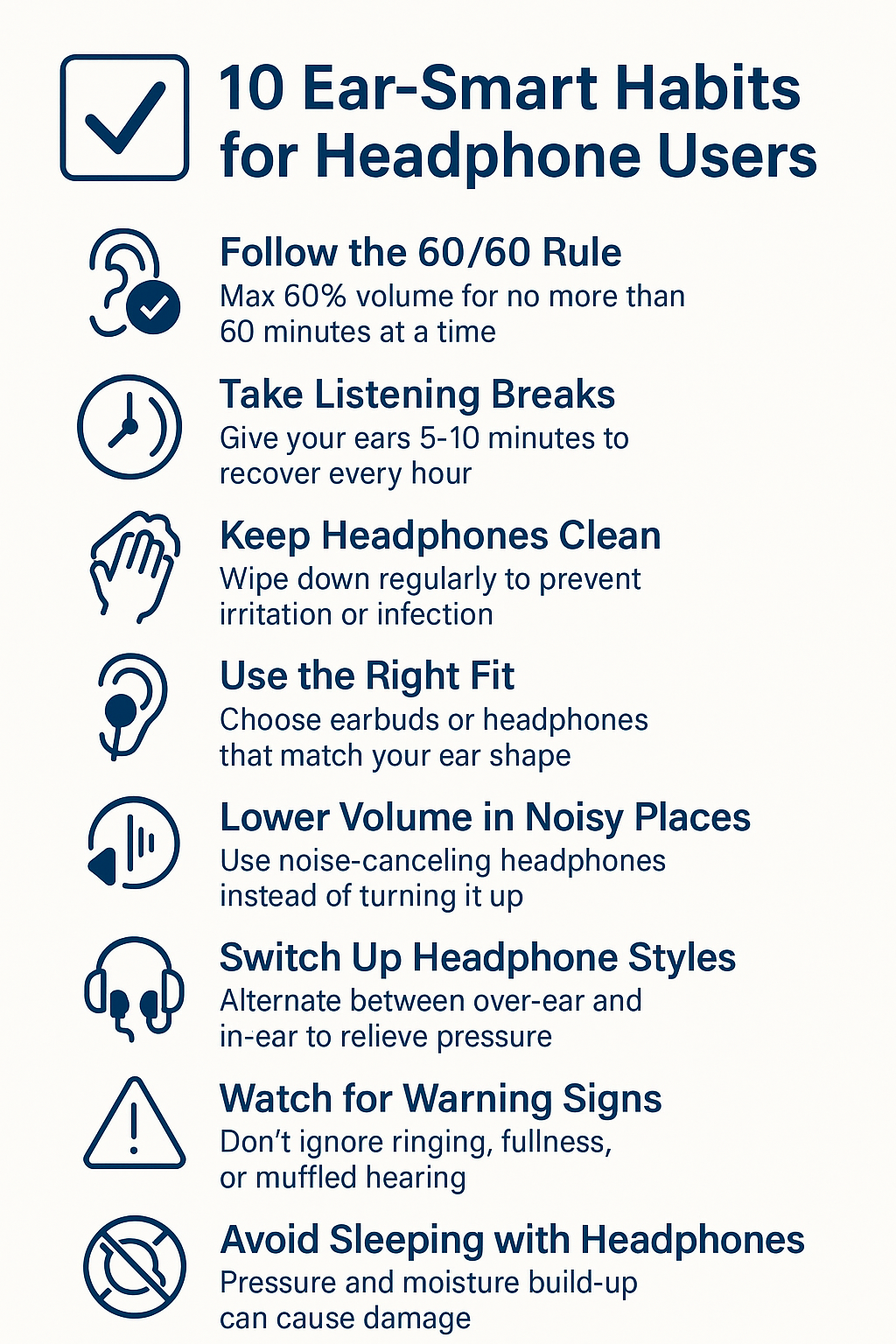
Underlying Conditions That May Be Triggered
If your ears feel weird every time you use headphones—or the sensation lasts longer than a few minutes—it may point to an underlying issue that’s being exposed or worsened by headphone use. These conditions often go unnoticed until something (like daily headphone wear) brings them to the surface.
Earwax Impaction, Tinnitus, and Eustachian Tube Dysfunction
Earwax Impaction
Headphones and earbuds can push earwax deeper into the canal, especially when inserted repeatedly or worn tightly. This can cause:
Fullness
Temporary hearing loss
Pressure or pain
Itching or irritation
The solution? Avoid digging in your ears, and get earwax professionally removed if needed.
Tinnitus
That ringing, buzzing, or hissing sound in your ears after listening? It could be a symptom of temporary or early-onset tinnitus, especially if you use headphones at high volumes. If it’s recurring or persistent, get a hearing check.
Eustachian Tube Dysfunction
If you frequently feel blocked or “popping” ears after using headphones, your Eustachian tubes (which equalize pressure between your ear and throat) may be struggling—especially if you’re congested or prone to allergies.
Noise Sensitivity and Hidden Hearing Loss
Hyperacusis
This is a condition where normal sounds feel uncomfortably loud or distorted. It can be triggered or worsened by headphone use, especially at high volumes. People with hyperacusis often report weird feelings in their ears even at moderate sound levels.
Hidden Hearing Loss (Cochlear Synaptopathy)
You might pass a hearing test but still struggle with:
Sound clarity
Noise fatigue
Occasional ringing or pressure
This can be caused by nerve damage between your cochlea and brain, often from noise exposure — like frequent headphone use. It’s subtle, but over time, it becomes more noticeable.
If you’re frequently feeling “off” after using headphones, it’s worth consulting an audiologist. Catching and addressing these issues early can make a huge difference in preserving your long-term hearing.
Up next: practical tips to keep your ears healthy and prevent headphone-related discomfort.
How to Prevent and Relieve Headphone-Related Ear Sensations
Whether you’re a music lover, a gamer, or someone who uses headphones for work, you don’t have to give them up to protect your ears. A few simple adjustments in how you wear, clean, and use your headphones can go a long way in maintaining ear comfort and auditory health.
Choosing the Right Headphones
Different ears need different fits. Consider the following:
Over-ear headphones are generally more comfortable for long use and distribute pressure better than on-ear models or earbuds.
Open-back designs allow airflow and reduce heat and pressure buildup.
Noise-canceling headphones let you keep the volume lower in noisy environments, reducing ear strain.
When choosing earbuds:
Opt for models with multiple ear tip sizes for a better seal and fit.
Avoid models that insert deeply into the canal unless they’re custom-molded.
Usage Tips, Volume Control, and Ear Care
Give Your Ears a Break
Follow the 60/60 rule: listen at no more than 60% volume for no more than 60 minutes at a time.
Take 5–10 minute breaks every hour to let your ears decompress and recover.
Monitor Volume and Sound Quality
Avoid using headphones in noisy environments that force you to raise the volume.
Use smartphone hearing health features or apps to track decibel levels and prevent overexposure.
Clean Your Headphones Regularly
Earwax, sweat, and debris can accumulate and lead to infections or irritation.
Use alcohol wipes for hard surfaces and gentle soap on silicone tips.
Care for Your Ears
Avoid inserting objects into your ears (yes, that includes cotton swabs).
Dry your ears well after showers or workouts.
Address signs of discomfort, tinnitus, or blocked sensation early—don’t wait for them to become chronic.
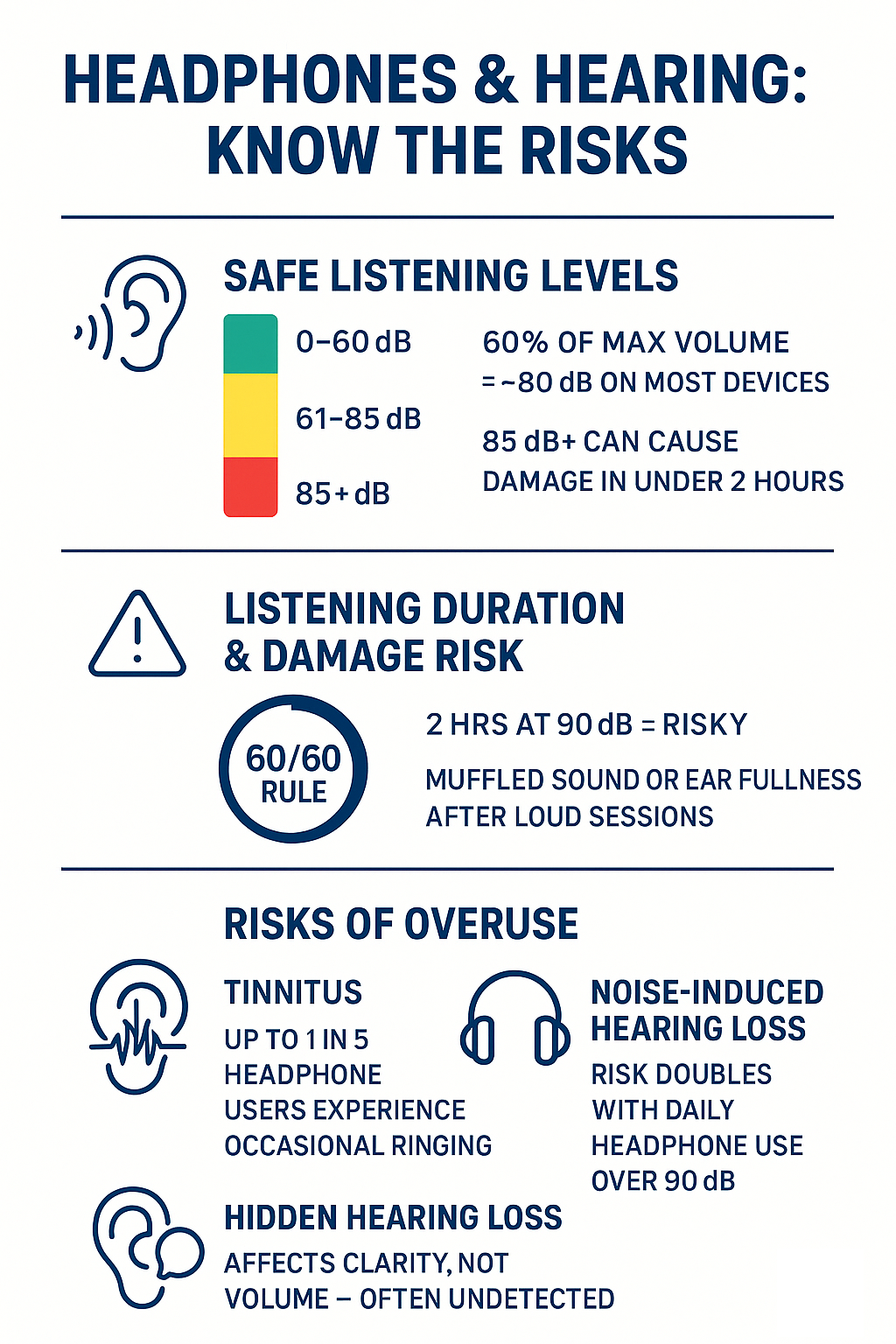
The goal isn’t to stop using headphones — it’s to use them wisely and comfortably. With the right setup and habits, you can enjoy immersive sound without strange side effects.
Conclusion: Keep Your Ears Comfortable While Enjoying Headphones
Headphones are an indispensable part of our daily lives, whether for music, podcasts, gaming, or professional use. But if your ears feel weird after using them, it’s important to pay attention to the signs. From pressure and ringing to discomfort or fullness, these sensations often point to temporary issues, but can also indicate underlying ear health concerns.
By choosing the right headphones, managing volume levels, and taking regular breaks, you can significantly reduce discomfort and protect your ears. If the sensation continues or worsens, it’s always wise to seek professional advice to avoid more serious hearing problems down the road.
Headphones should enhance your listening experience, not leave you with lingering discomfort. Armed with the right knowledge and habits, you can enjoy clear, comfortable audio while preserving your hearing health for the long term.
FAQs About Ear Discomfort from Headphones
Why do my ears feel full after using headphones?
That full or “clogged” feeling is often due to pressure buildup, poor earbud fit, or temporary threshold shift caused by high volume. It usually resolves with rest and proper headphone hygiene.
Is it normal for ears to hurt after headphones?
Mild soreness can occur from pressure or extended use, especially with on-ear or tight over-ear headphones. Persistent pain may suggest infection, inflammation, or misfit, and should be checked.
Can headphones cause ear infections?
Yes. Moisture and bacteria can build up, especially in poorly cleaned earbuds, increasing the risk of otitis externa (outer ear infection). Regular cleaning and breaks help reduce this risk.
Why do I hear ringing in my ears after headphones?
Ringing (tinnitus) often results from loud volume exposure or ear fatigue. If it’s consistent after headphone use, your ears may be overworked—and at risk of damage.
How loud is too loud for headphones?
Any sound over 85 dB for extended periods can harm your hearing. Stick to 60% of max volume and limit sessions to 60 minutes with breaks in between.
Should I stop using headphones if my ears feel weird?
You don’t have to quit entirely, but take it as a sign to adjust usage habits—check your fit, lower the volume, take breaks, and seek professional advice if symptoms persist.
This article is for informational purposes only and is not a substitute for professional medical advice, diagnosis, or treatment. If you are concerned about your hearing or ear health, please consult a qualified healthcare provider.
Disclaimer
This article is for informational purposes only and is not a substitute for professional medical advice, diagnosis, or treatment. If you are concerned about your hearing or ear health, please consult a qualified healthcare provider.



